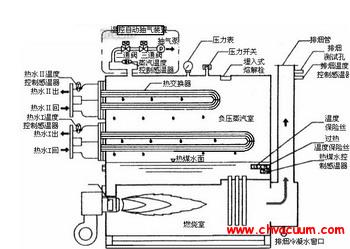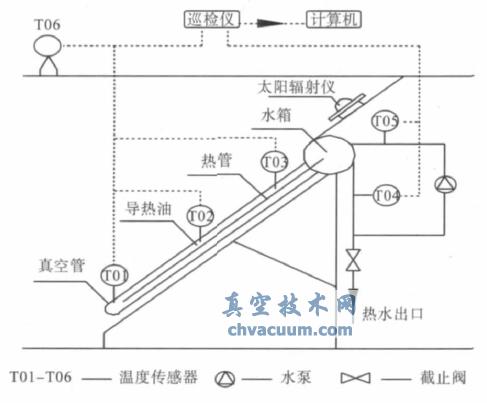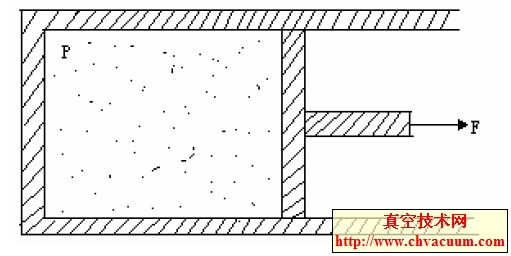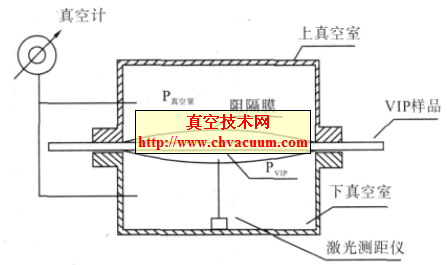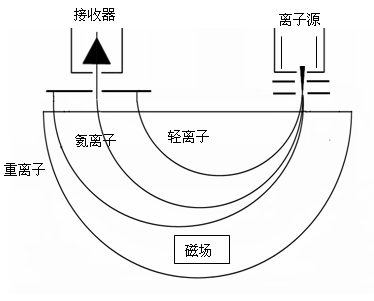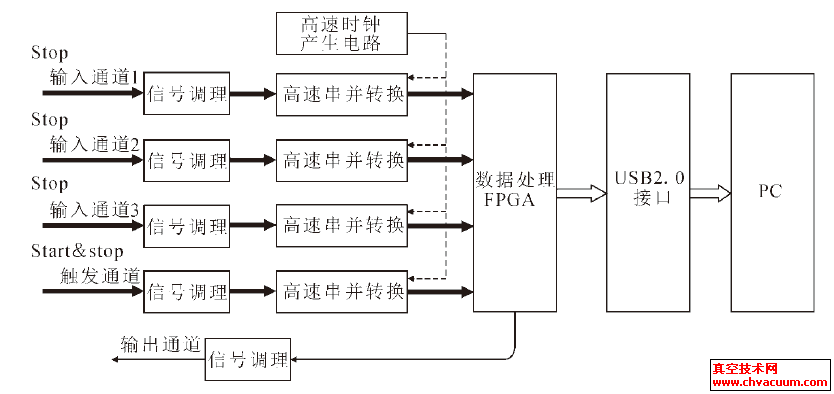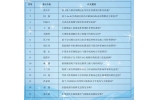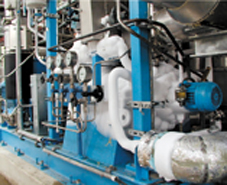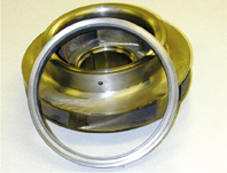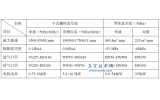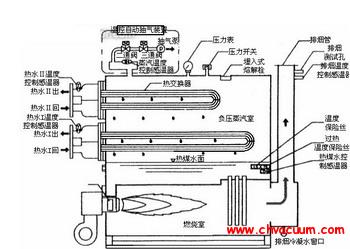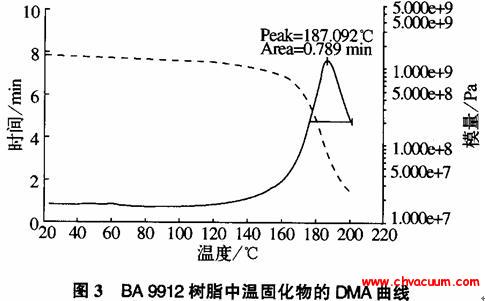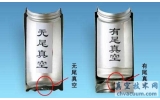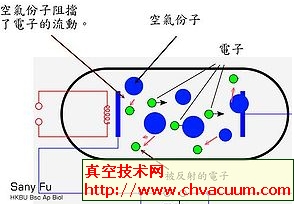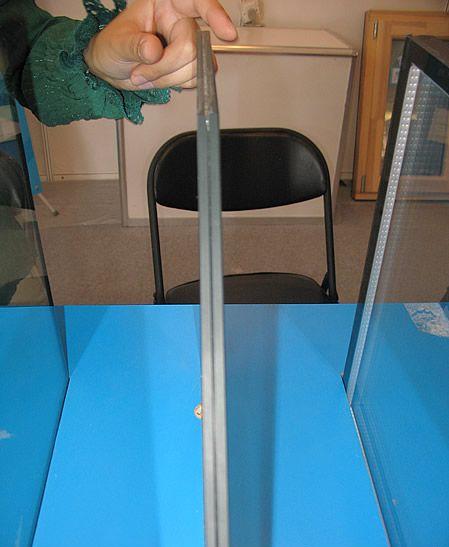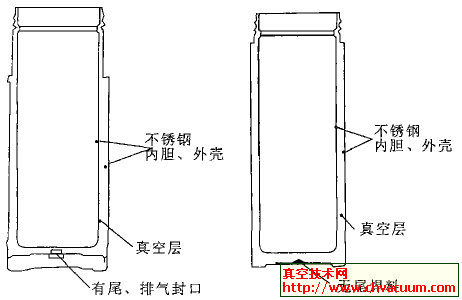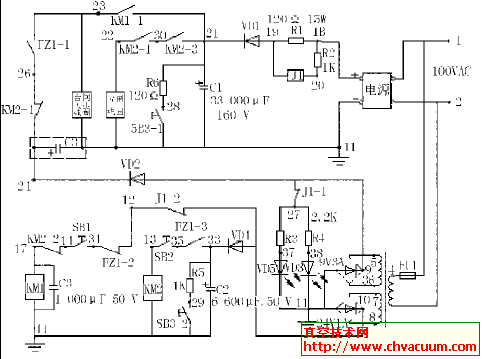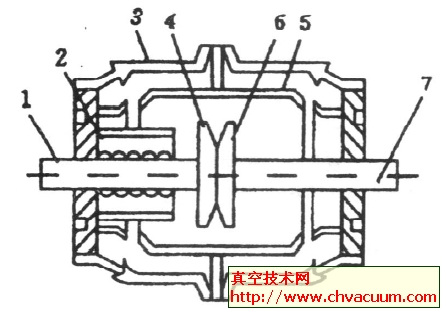柱形单极表面波等离子体天线控制模型研究
由气体分子动力学及波尔兹曼方程建立了基于柱形单极表面波等离子天线结构的控制模型,通过推导和计算得出了一系列模型方程。通过与实验数据的分析对比,发现在一定条件下模型数据与实验测试结果吻合良好。模型可用于等离子体天线参数控制、预测以及等离子天线的参数重构控制。
表面波是产生等离子体的一种简单有效的途径。采用电容或电感耦合的方法, 由表面波可生成高浓度、低噪声的表面波等离子体。由于电磁波不能穿透等离子体且趋肤深度较小, 等离子柱导电性能与金属类似, 电磁波可沿等离子体表面传播, 因此可将等离子体柱用作天线[1-5] 。等离子体天线具有噪声低、性能与金属天线接近、参数重构能力强、天线阵列设计简单等优点, 适用于复杂电磁环境。赵国伟等[6-10] 对等离子体天线色散关系和辐射场数值、射频激励等离子体非线性效应进行了相关研究, 李圣等[11] 对表面波等离子天线物理特性进行了理论分析, 陈宗胜等[12] 研究了表面波等离子体天线的柱状等离子体源参数特性, 杨兰兰等[13] 研究了等离子体天线中波的色散关系, 曹立辉等[14] 对等离子体天线辐射特性作了相关研究。综合以上研究, 外部激励能量对等离子体影响作用巨大, 直接决定天线的性能。控制外部参数如装置的尺寸、放电气压、放电功率、射频源频率以及放电线圈的设计可对等离子体天线的相关参数进行控制。
基于气体动力学理论、波尔兹曼方程和柱形单极表面波等离子天线的物理结构, 建立等离子天线参数控制模型, 反映天线状态与外部控制能量的相互关系, 能为等离子天线参数重构提供相应的理论分析依据。
国外对于等离子天线模型已一定的研究[15-18], 文献[17] 提出一种电场放电的等离子天线的模型, 但从现有的文献看基于等离子天线放电结构的模型还没有建立, 现有等离子天线模型缺乏深入的理论研究和推导。
等离子天线的参数重构研究是等离子天线走向实际运用的一个重要内容。从粒子运动微观层面进行建模分析、计算, 能得到近似度较高的结果。实验证明, 建立的模型具有较好的精度, 一定条件下, 适用于等离子体天线参数控制。
关键词: 等离子天线;单极柱形;表面波;控制模型;研究
Abstract: The control of the cylindrical monopole plasma antenna excited by the surface wave,and the structure of the plasma antenna were modeled,formulated,and evaluated on the basis of gas molecular dynamics and Boltzmann equation.Various factors,such as the impacts of the power of the external excitation on the distributions of the magnetic field and current density,electron energy and power density around the antenna,as well as the dielectric constant,conductivity and emission properties on its surface were calculated.The calculated results including the distributions of the current density and electric field of the plasma antenna,agree fairly well with those of the experiment under certain conditions.We suggest that the recently developed model be capable of controlling and predicting the characteristics,and realizing the reconfigurable control of the plasma antenna.
Keywords: Plasma antenna,Cylindrical monopole,Surface wave,Control model,Research
基金项目: 军队科研重点项目
参考文献:
[1]王世庆,向茜,柳建.表面波等离子体柱导电性及其激发系统方案[J].应用科学学报,2009,27(4):392-
[2]刘良涛,祝大军,刘盛刚.离子体天线的原理与设计[J].雷达与对抗,2004,(4):26-30
[3]袁忠才,时家明,余桂芳.表面波激励等离子体天线的原理与实现[J].电子信急对抗技术,2006,21:38-42
[4]张,李红波,刘国强.等离子体天线的基本特性研究[J].信气息工程大学学报,2006,9(7):241-243
[5]鄢泽林,王世庆,郦文忠,等.介质管内等离子体表面波传播特性研究[J].真空科学与技术学报,2008,28(4):313-317
[6]位朝垒,工世庆,邸泽林,等.表面波等离子体天线的能量衰减系数研究[J].真空科学与技术学报,2009,29(3):251-254
[7]赵国伟,徐跃民,陈诚.等离子体色散关系和辐射场数值计算[J].物理学报,2007,(9):74-78
[8]赵国伟,王之江,徐跃民.射频激励等离子体非线性效应的FDTD数值模拟[J].物理学报,2007,(9):32-36
[9]赵国伟,陈诚,徐跃民.柱形等离子体辐射场的数值计算和分析[J].空间科学学报,2005,25(2):91-97
[10]赵国伟,徐跃民,陈诚.柱形等离子体辐射场和阻抗的数值计算[J].物理学报,2005,55(7):3458-3463
[11]李圣.表面波等离子天线物理特性的理论分析[J].南华大学学报,2007,21(2):37-40
[12]陈宗胜,时家明,王甲寅,等.表面波等离子体天线的柱状等离子体源参数研究[J].真空电子技术,2008,(2):18-21
[13]杨兰兰,屠彦,王保平.离子体天线中波的色散关系的研究[J].真空科学与技术学报,2004,24(6):424-427
[14]曹立辉,郑龙根,张志刚,等.等离子体天线辐射特性研究[J].海军工程大学学报,2009,21(2):47-51
[15]ilinskij A P,Sacharov I E,Golant V E.Fundamentals Plas-ma Physics[J],MIR,Moscow,1983
[16]Kortshagen U,Busch C,Tsendin L D.On Simplifying Ap-proach to the Solution of the Boltzmann Equation in SpatiallyInhomogeneous Plasma[J].Plasma Sources Sci Technol,1996,(5):1-17
[17]Rayner J P,Whichello A P,Cheetham A D.Physical Charac-teristics of Plasma Antennas[C].IEEE Trans on Plasma Sci-ence,2004,32:269-281
[18]Cerri G,Moglie F,Montesi R,et al.FDTD Solution of theMaxwell-Boltzmann System for Electromagnetic Wave Propa-Gation in a Plasma[J].IEEE Trans on AP,2008,56:2584-2588


